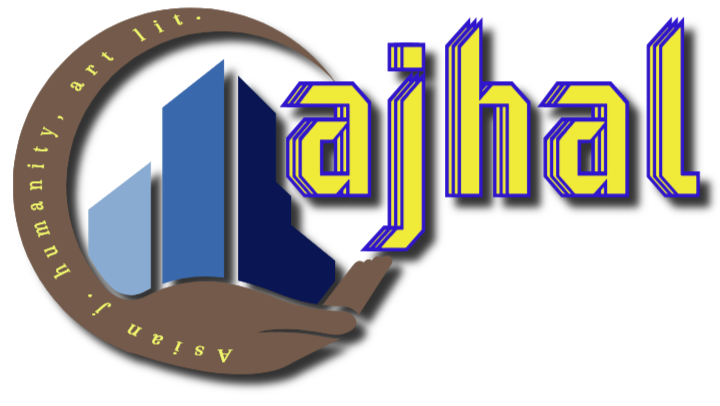Confidence Interventions: Do They Work?
DOI:
https://doi.org/10.18034/ajhal.v5i2.536Keywords:
Confidence Profiling, Positive Self-Talk, Imagery interventionAbstract
The purpose of the present study was to investigate the effectiveness of different confidence enhancing techniques (Positive Self-Talk, Imagery, and Confidence Profiling) in amateur track and field athletes. Fifteen participants volunteered to take part in the study, five in each intervention group. A baseline measure using TSCI and SSCI has administrated prior to the intervention. Each athlete then completed a four-week intervention, completing the TSCI and SSCI again post-intervention. Results from a mixed model ANOVA yielded a significant difference in pre scores to post in each intervention, p < 0.05. Although no significant difference was found between groups, p > 0.05, meaning all groups were of equal effect. Despite not being statistically different, imagery improved scores the most. These results provide a protocol structure for psychologists and coaches to follow.
Downloads
References
Bandura, A. (1977) ‘Self-efficacy: Toward a Unifying Theory of Behavioural Change’, Psychological Review 84 pp. 191-215.
Bandura, A. (1984) ‘Recycling Misconceptions of Perceived Self-Efficacy’, Cognitive Therapy and Research 8 pp. 231-255.
Bandura, A. (1986). Social Foundations of Thought and Action. Englewood Cliffs, NJ: Prentice Hall.
Beattie, S., Hardy, L., Savage, J., Woodman, T., Callow, N. (2011) ‘Development and Validation of a Trait Measure of Robustness of Self-Confidence’, Psychology of Sport and Exercise 12(2) pp. 184-192.
Bull, S. J. (1989) ‘The Role of a Sport Psychology Consultant: A Case Study of an Ultra Distance Runners’, The Sport Psychology 3 pp. 254-264.
Bull. S. J. (1991) ‘Personal and Situational Influences on Adherence to Mental Skills Training’, Journal of Sport and Exercise Psychology 12 pp. 121-132.
Burton, D., Naylor, S. (1997) ‘Is Anxiety Really Facilitative? Reaction to the Myth That Cognitive Anxiety Always Impairs Performance’, Journal of Applied Sport Psychology 9 pp. 295-302.
Callow, N., Roberts, R. (2010) ‘Imagery: Perspectives, Order, and Angle’, Psychology of Sport & Exercise 4 pp. 325-329.
Cumming, J., Hall. C., Shambrook, C. (2004) ‘The Influence of an Imagery Workshop on Athletes’, Journal of Sport Psychology 6(1) pp. 52-73.
Evans, L., Jones, L., Mullen, R. (2004) ‘An Imagery Intervention During the Competitive Season with an Elite Rugby Player’, The Sport Psychologist 18 pp. 252-271.
Feltz, D.L., Landers, D.M. (1983) ‘The Effects of Mental Practice on Motor Skill Learning and Performance: A Meta-Analysis’, Journal of Sport Psychology 5 pp. 25-57.
Feltz, D.L., Lirgg, C.D. (2001). Self-Efficacy Beliefs of Athletes, Teams and Coaches. In R.N. Singer, H.A. Hausenblas, C.M. Janelle (Eds.), Handbook of Sport Psychology (pp. 304-361). New York: John Wiley & Sons.
Fung, L., Chueng, S.Y. (2001) ‘Confirmatory Factor Analysis of the Trait Sport Confidence Inventory and State Sport-Confidence Inventory on a Chinese Sample’, International Journal of Sport Psychology 32(4) pp. 304-313.
Gould, D., Hodge, K., Peterson, K., Giannini, J. (1989) ‘An Exploratory Examination of Strategies Used by Elite Coaches to Enhance Self-Effiacy in Athletes’, Journal of Sport and Exercise Psychology 11 pp. 128-140.
Greenspan, M. J., Feltz (1989) ‘Psychological Intervention with Athletes in Competitive Situations: A Review’ The Sport Psychologist 3 pp. 219-236.
Hardy, J., Hall, C. R., Alexander, M. R. (2001) ‘Exploring Self-Talk and Affective States in Sport’, Journal of Sports Sciences 19(7) pp. 469-475.
Hardy, J., Gammage, K., Hall, C. (2001) ‘A Descriptive Study of Athlete Self-Talk’, The Sport Psychologist 15 pp. 306-318.
Hardy, J., Roberts, R., Hardy, L. (2009) ‘Awareness and Motivation to Change Negative Self-Talk’, The Sport Psychologist 23 pp. 435-450.
Hardy, L. (1997) ‘The Coleman Roberts Griffith address: three myths about applied consultancy work.’ Journal of Applied Sport Psychology 9 pp. 277-294.
Hatzigeorgiadis, A., Zourbanos, N., Galanis, E., Theodorakis,Y. (2011) ‘Self-talk and sports performance: A meta-analysis’, Perspectives on Psychological Science 6 pp. 348-356.
Hays, K., Maynard, I., Thomas, O. and Bawden, M. (2007) ‘Sources and Types of Confidence Identified by World Class Sport Performers’, Journal of Applied Sport Psychology 19(4) pp. 434-456.
Hays, K., Thomas, O., Butt, J., Maynard, I. (2010) ‘The Development of Confidence Profiling for Sport’, The Sport Psychologist 18(3) pp. 373-392.
Hays, K., Thomas, O., Maynard, I., Butt, J. (2010) ‘The Role of Confidence Profiling in Cognitive-Behavioural Interventions in Sport’, The Sport Psychologist 24(3) pp. 393-414.
Holmes, P., Collins, D. (2001) ‘The PETTLEP Approach to Motor Imagery: A Functional Equivalence Model for Sport Psychologists’, Journal of Applied Sport Psychology 13 pp.60-83.
Horn, T. (2008) Advances in Sport Psychology. 3rd ed. Champaign, IL: Human Kinetics.
Jenny, O., Krista, J., Munroe-Chandler, B., Hall, C, R., Hall, N. D. (2013) ‘Using Motivational General-Mastery Imagery to Improve the Self-efficacy of Youth Squash Players’, Journal of Applied Sport Psychology 26(1) pp. 66-81.
Jones, G. (1993) ‘The Role of Performance Profiling in Cognitive Behavioural Interventions in Sport’, The Sport Psychologist 7 pp. 160-172.
Jones, J. G. (1996) ‘Competitive anxiety in sport’, European Perspectives on Exercise and Sport Psychology pp. 128-153.
Jones, G., Hanton, S. (2001) ‘Pre-Competitive Feeling States and Directional Anxiety Interpretations’, Journal of Sports Sciences 19 pp. 385–395.
Karageoeghis, C, I., Terry, P, C. (2011) Inside Sport Psychology. Champaign, IL: Human Kinetics.
Lirgg, C.D. (1991) ‘Gender Differences in Self-Confidence in Physical Activity: A Meta-Analysis of Recent Studies’, Journal of Sport and Exercise Psychology 8 pp. 294-310.
Martin, J. J., Gill, D. L. (1991) ‘The Relationships Among Competitive Orientation, Sport-Confidence, Self-Efficacy, Anxiety, and Performance’, Journal of Sport and Exercise Psychology 13 pp.149-159.
Martin, K. A., Moritz, S.E., Hall, C.R. (1999) ‘Imagery Use in Sport: A Literature Review and Applied Model’, The Sport Psychologist 13 pp. 245-268.
Morris, T., Koehn, S. (2004) Self Confidence in Sport and Exercise. In Sport Psychology: Theory, Applications and Issue. 2nd ed. Brisbane, AU: Wiley.
Van Raalte, J. L., Brewer. B. W., Lewis, B. P., Linder, D. E., Wildman , G., Kozimor, J. (1995) ‘The Effects of Positive and Negative Self-Talk on Dart Throwing Performance’, Journal of Sport Behaviour 18, 50-57.
Van Raalte, J. L., Cornelius, A. E., Brewer, B. W., Hatten, S. J. (2000) ‘The Antecedents and Consequences of Self-Talk in Competitive Tennis’, Journal of Sport and Exercise Psychology 22 pp. 345-356.
Vealey, R. S. (1986) ‘Conceptualization of Sport-Confidence and Competitive Orientation: Preliminary Investigation and Instrument Development’, Journal of Sport Psychology 8 pp. 221–246.
Vealey, R. S (2001) Handbook of Sport Psychology. NY. New York: Wiley.
Vealey, R. S., Hayashi, S. W., Garner-Holman, M., Giacobbi, P. (1998) ‘Sources of sport-confidence: Conceptualization and Instrument Development’, Journal of Sport and Exercise Psychology 20(10) pp. 54 – 80.
Vealey, R., Vernau, D. (2010). Chapter 54: Confidence. In: Hanrahan S. J., Andersen. M. B Routledge Handbook of Applied Sport Psychology (pp. 518-527). New York: Routledge.
Weinberg, R. S., Gould, D. (2011) Foundations of Sport and Exercise Psychology. 5th ed. Champaign, IL: Human Kinetics.
Weinberg, R., Miller, A., Horn, T. (2012) ‘The Influence of a Self-Talk Intervention on Collegiate Cross-Country Runners’, International Journal of Sport and Exercise Psychology 10(2) pp. 123-134.
Wilson, R. C., Sullivan, P. J., Myers, N. D., Feltz, D. L. (2004) ‘Sources of Sport Confidence of Master Athletes’, Journal of Sport and Exercise Psychology 26 pp. 369-384.
--0--















